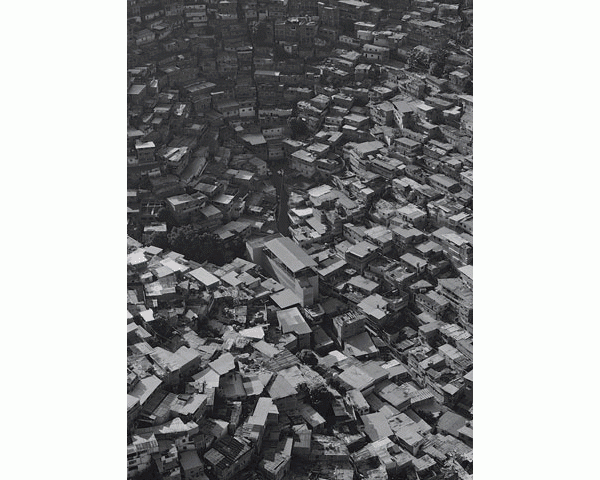
Author: MIT Center for Advanced Urbanism (Princeton Architectural Press, 2016)
The MIT Center for Advanced Urbanism (CAU) holds a biennial conference under the theme of infrastructure and this book, Scaling Infrastructure, is a capture of the conference held in 2014. To dissect the entire book would be too difficult and arduous a task, and would not make for good reading. Instead, I’d like to focus on the points that were hit and the overall theme of the book.
The book is broken out into three sections: Recalibrating Infrastructure, Resilient Infrastructure, and Micro Infrastructure. Each one of these sections contains various speakers of different backgrounds—from politicians, designers, and engineers, to the head of hardware and mechanical engineering for senseFly, a drone company doing some amazing work mapping places that have had trouble getting real-time data in the past.
The interesting, and impressive, part about the book’s approach is that MIT and the CAU have clearly recognized the fact that infrastructure is a massive element of our cities and that communities with one voice, one position, is not enough to generate meaningful discussions. We are seeing this throughout many sectors now, with P3 partnerships (public-private) for buildings, for example. This is also evident in the way we work, with many firms moving to “integrated” approaches and employing many different fields of study. Because of this foresight and ability to recognize that many voices need to be at the table to drive change positively, the conference was, in my mind, a great success and the book is rich with information because of it.
In Recalibrating Infrastructure, the “invited speakers addressed three challenges presented by surplus infrastrucutre: in the realms of design, engineering, and politics.” Sonja Beeck speaks to a project in Germany within which inflexible infrastructure systems will collapse after a matter of time, and that flexibility is key. In the project she spoke of—in a city called Aschersleben—the problem was that the city was shrinking from the outside in. They needed flexible infrastructure to give moments of interest and intrigue to the city, to make it work, and to prevent future collapse.
The talks go on like this, with one interesting side note being the Mayor of Flint, Michigan, which, if you do not know, is going through a major infrastructure crisis with their water supply. It was a bit hard to read through Dayne Walling’s presentation since the government failed Flint so spectacularly, that it is heartbreaking beyond words. The proposal shown by Walling is smart, exciting, and begs the question, “where did this go wrong?” I tried to put the political aspect out of my mind as I moved through the rest of the section, but admittedly, it was hard given current events and their presence of mind, which provided an all too real example of why proper infrastructure is vital, and why programs like these are a necessity; people need to start talking, start planning, start making solutions to fix these places in need.
Resilient Infrastructure was very interesting as it focused on “A future in which design projects can holistically include community resilience and physical hazard mitigation techniques.” The organizer of the second panel, Miho Mazereeuw, Assistant Professor in Architecture and Urbanism at MIT, opens up with a fascinating anecdotal story about resilient infrastructure:
…I’d like to describe the seawall in Kamaishi, Iwate Prefecture, in Japan. It took three decades to build and required the equivalent of U.S. $1.6 billion. It was a mile long, 227 feet from top to bottom, twenty feet above sea level, and was proudly listed in Guinness World Records. The wall broke with the first thirty-foot wave that hit the Tohoku coastline on March 11, 2011.
He goes on to talk about how the wall may have actually caused more damage to neighbouring cities, and the debate as to whether the wall created a “false sense of security among residents…”
Reading Deputy Administrator of FEMA Richard Serino’s presentation was powerful, concise, and to the point. He describes how changes to infrastructure need to be “bottom-up”. He spoke to the fact that having survivors after a disaster be part of the relief effort is a huge community building bonus, that these people take more pride in their communities and that communities are better off for it.
Finally, the book looks at Micro Infrastructure, or items “all the way down to the individually customized.” The idea was not looking at small infrastructure, but at places like American suburbs, instead of dense, tower-laden metropolises. My favourite presentation in this section was by Daniel Sperling, Professor of Civil Engineering and Environmental Science and Policy from the University of California, Davis, and author of Two Billion Cars: Driving Towards Sustainability, which focused on the rapid influx of vehicles in our world and the effect this will have on our planet.
His piece speaks to “New Mobility Options” such as Dynamic Ridesharing, Carsharing, Smart Paratransit. Again the idea of Uber or Lyft, building up our transit options so that we can reduce the need for a personal car, is paramount. These micro changes add up to massive benefits throughout an entire country like the US or Canada. This was more or less the theme throughout this section: how small, local changes can impact vast areas, and how small discussions can drive big change.
Scaling Infrastructure is a quick read and overall, very enjoyable. It raised several more questions, but in my mind, that is what a good conference should do. The reader of the book, or the person in the conference, should walk away wondering more than they were before, asking questions to local government about their services. Designers, planners, politicians, engineers, should all be at the same table, sparking new and exciting innovations in ways to move our world forward and fix the issues that are currently causing grief.
Overall, Scaling Infrastructure was a powerfully concise book, packed with interesting information that will bounce around in your mind for many weeks after reading it.
***
For more information, visit the Princeton Architectural Press website.
**
Jeremy Senko is happily lost in the world of theoretical architecture and design. He is forever a student at heart, consistently reading, experiencing and learning about the world he inhabits. More specifically, he works as an Interior Designer in Vancouver and plays an active part in bettering the environments we live in.




